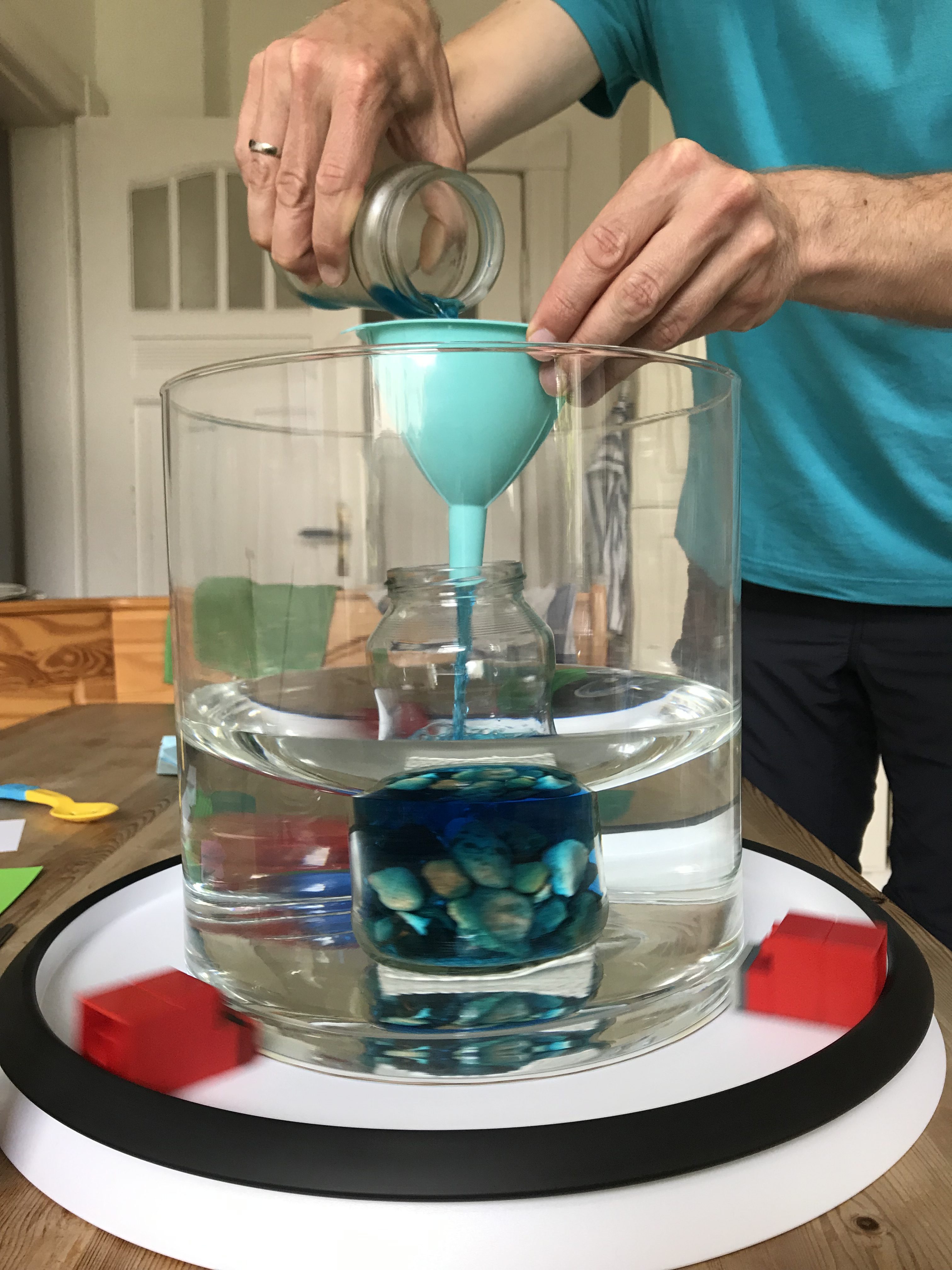
Working on our own affordable rotating table for oceanographic experiments!
Inspired by the article “Affordable Rotating Fluid Demonstrations for Geoscience Education: the DIYnamics Project” by the Hill et al. (2018), Joke, Torge and I have been wanting to build an affordable rotating table for teaching for a while now. On Saturday, we met up again to work on the project.
This post is mainly to document for ourselves where we are at and what else needs to happen to get the experiments working.
New this time: New rotating tables, aka Lazy Susans. After the one I’ve had in my kitchen was slightly too off-center to run smoothly, we bought the ones recommended by the DIYnamics project. And they work a lot better! To center our tank on the rotating table and keep it safely in place, we used these nifty LEGO and LEGO Duplo contraptions, which worked perfectly.
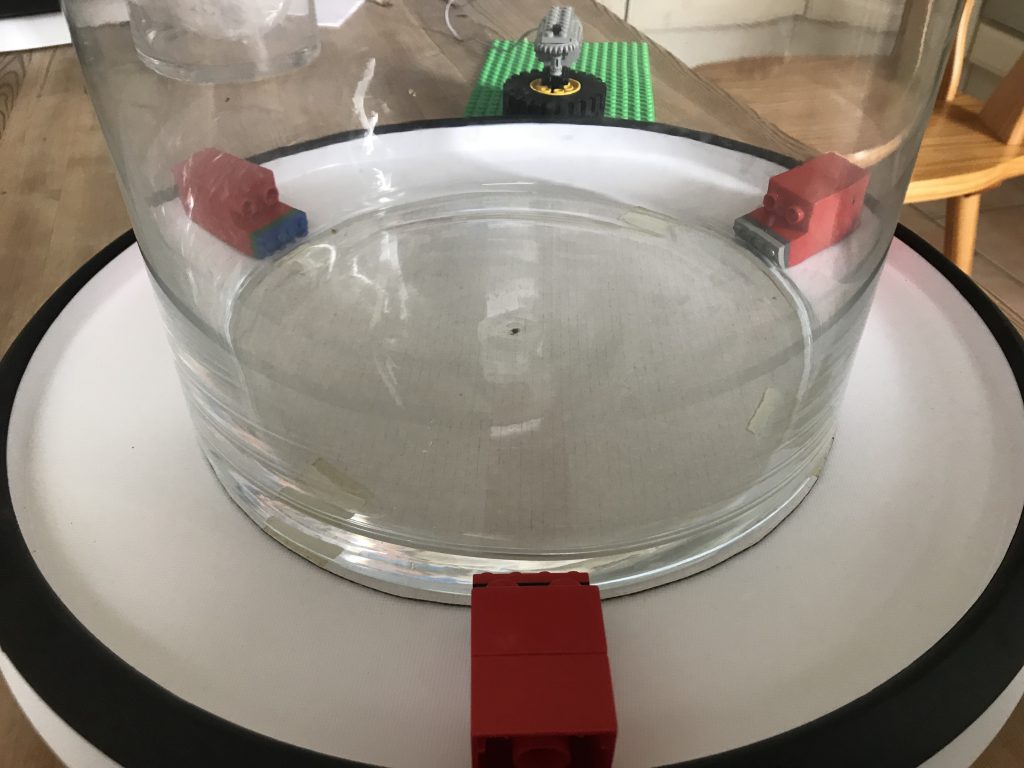
We also used a LEGO contraption to get the wheel close enough to drive the rotating table. The yellow line below shows where the rim of the rotating table’s foot needs to sit.
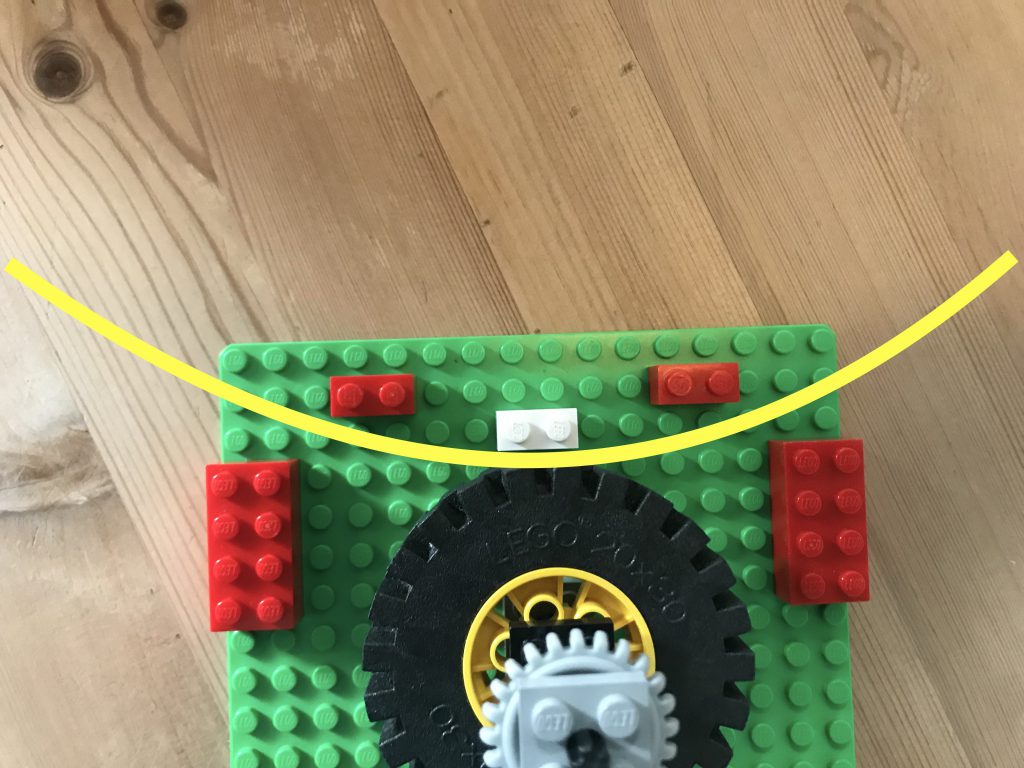
And this is how the engine has to be placed to drive the rotating table.
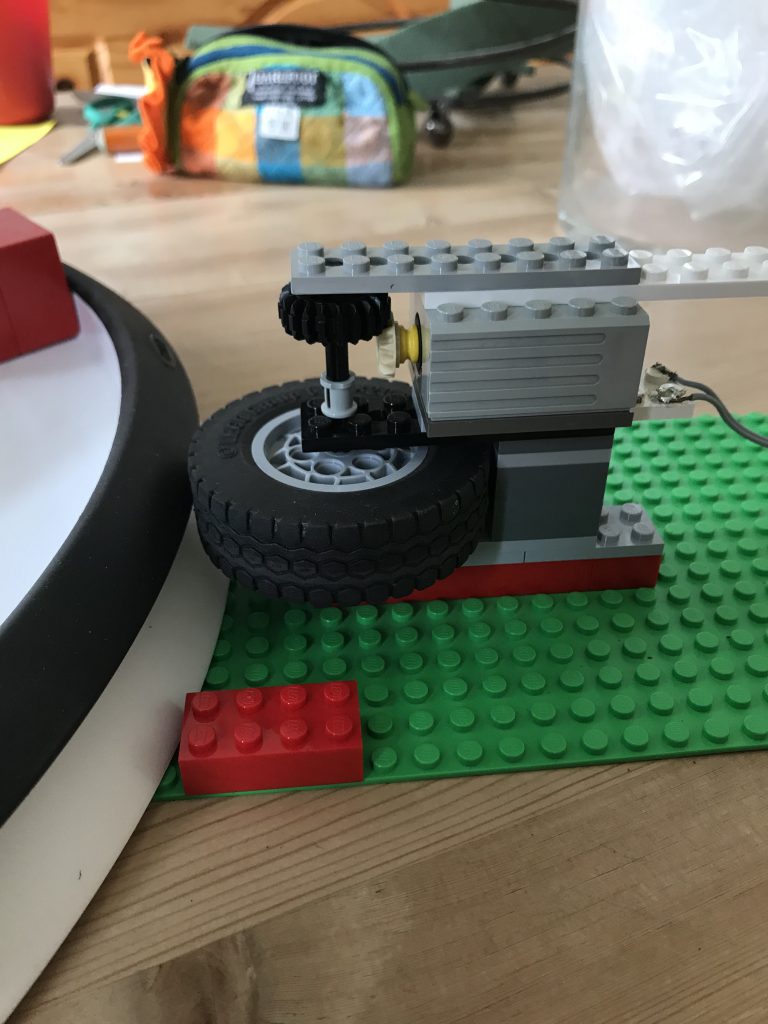
First attempt: Yes! Very nice parabolic surface! Very cool to see time and time again!
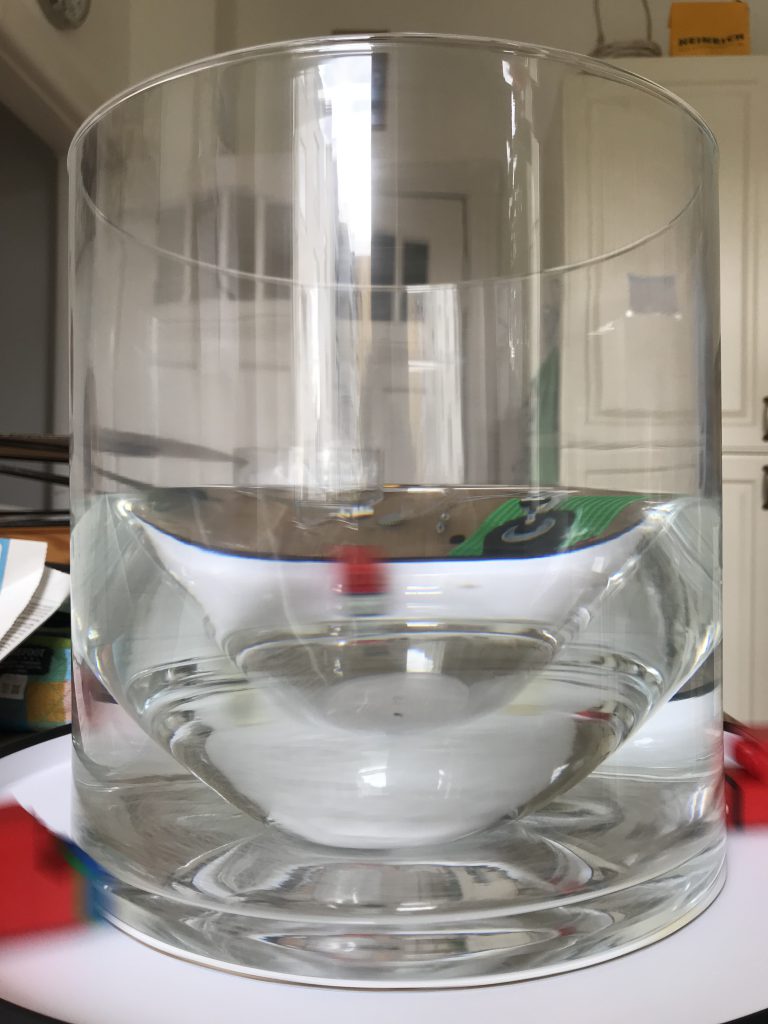
Now first attempt at a Hadley cell experiment: A jar with blue ice is placed at the center of the tank. Difficulties here: Cooling sets in right away, before the rotating tank has reached solid body rotation. That might potentially mess up everything (we don’t know).
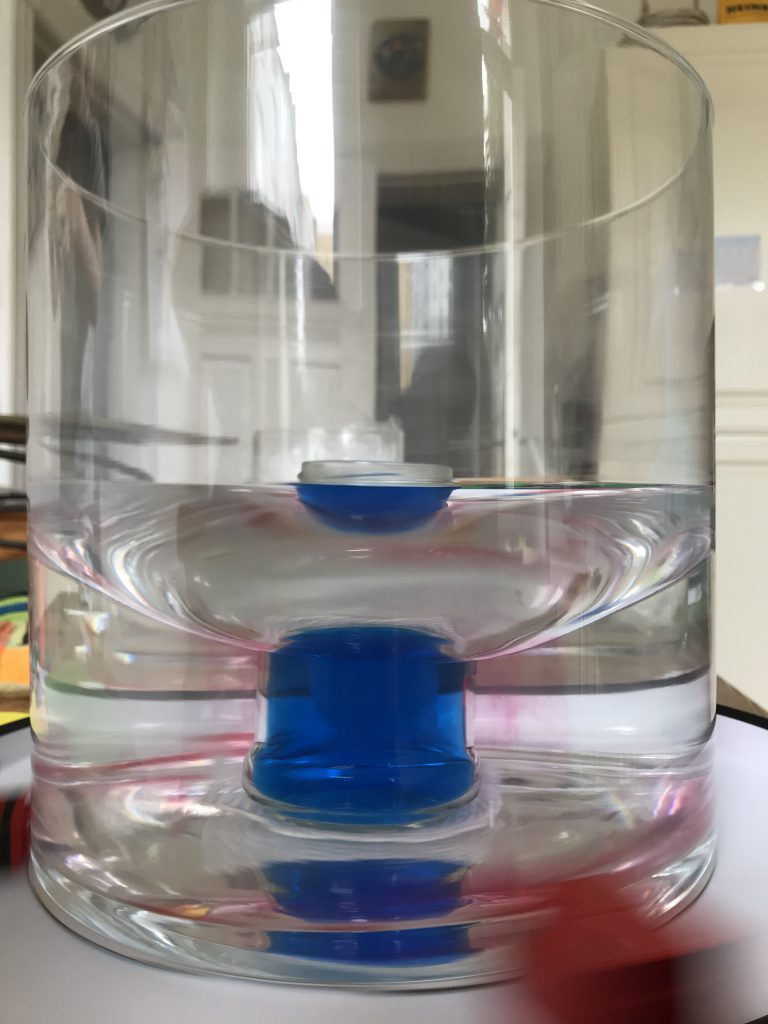
So. Next attempt: Use a jar (weighted down with stones so it doesn’t float up) until the tank has reached solid body rotation, then add blue ice water
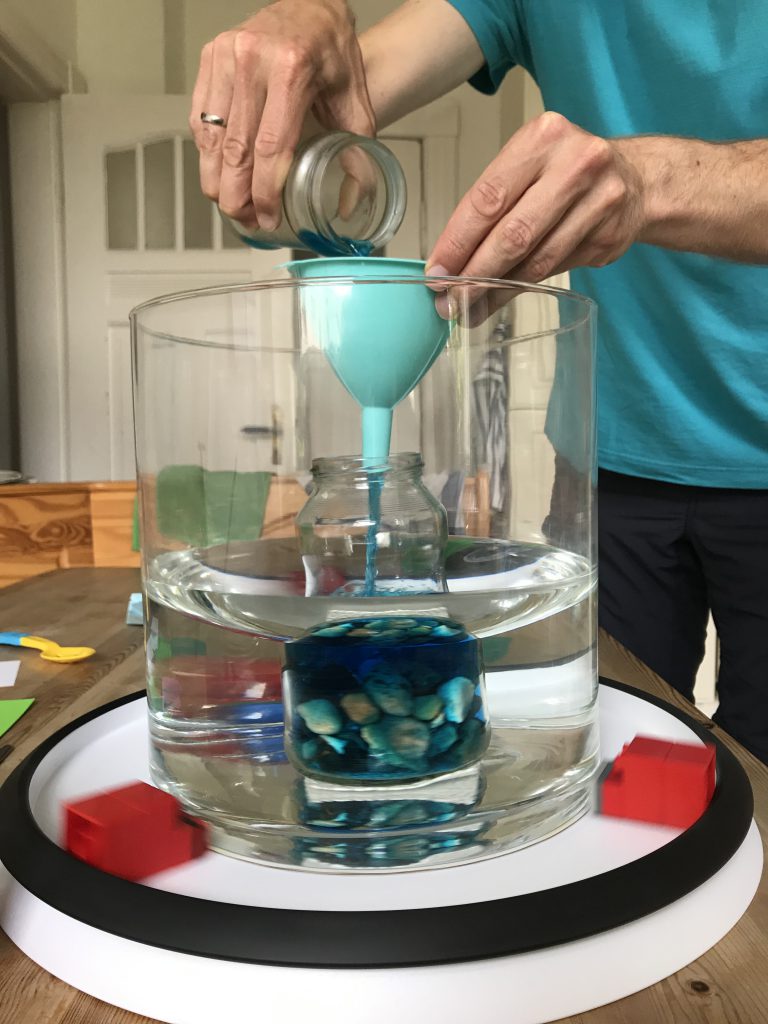
Working better, even though the green dye is completely invisible…
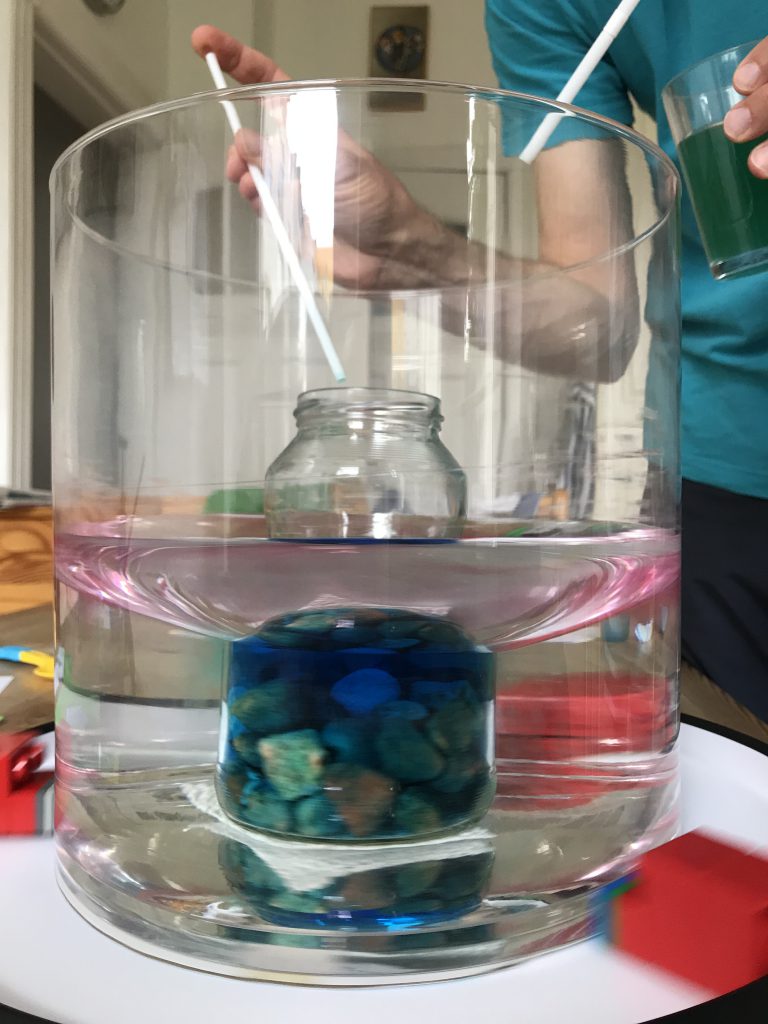
We didn’t measure rotation, nor did we calculate what kind of regime we were expecting, so the best result we got was “The Heart” (see below) — possibly eddying regime with wavenumber 3?
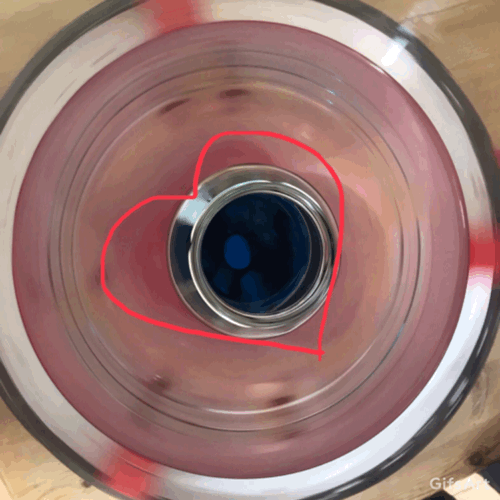
Here is what we learned for next time:
- use better dye tracers and make sure their density isn’t too far off the water in the tank
- use white LEGO bricks to hold the tank in place (so they don’t make you dizzy watching the tank)
- measure the rotation rate and calculate what kind of regime we expect to see — overturning or eddying, and at which wave number (or, even better, the other way round: decide what we want to see and calculate how to set the parameters in order to see it)
- use white cylinder in the middle so as to not distract from the circulation we want to see; weigh the cylinder down empty and fill it with ice water when the tank has reached solid body rotation
- give the circulation a little more time to develop between adding the cold water at the center and putting in dyes (at least 10 minutes)
- it might actually be worth reading the DIYnamics team’s instruction again, and to buy exactly what they recommend. That might save us a lot of time ;-)
But: As always this was fun! :-)
P.S.: Even though this is happening in a kitchen, I don’t think this deserves the hashtag #kitchenoceanography — the equipment we are using here is already too specialized to be available in “most” kitchens. Or what would you say?
Funded! “Ocean currents in a tank: from dry theory to juicy reality” | Dr. Mirjam S. Glessmer says:
[…] how Joke, Torge and I were working on building an affordable, home-made rotating tank to use in ocean dynamics teaching only last weekend? That session was inspired by a proposal that Torge submitted a while back, and […]